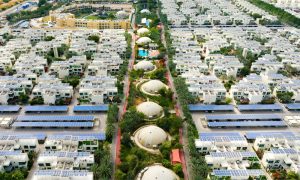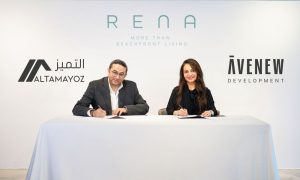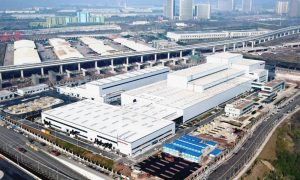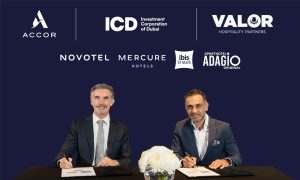A look at LEED 4.0
With press pass in hand and several more barrels of carbon credits burnt, this past month afforded me the opportunity to visit the heart of the sustainable development movement “Greenbuild” first hand, to listen to the Ecology of Commerce guru Paul Hawken and to assess the status of Leadership in Energy and Environmental Design (LEED) Version 4 which will be released in 2013.
The second week of November was the 11th annual celebration of sustainable development, an event known as Greenbuild. This year 25,000 industry professionals, students and political leaders joined together in San Francisco to take stock of where we are, the success and setbacks that we had in 2012, and to chart our course for the future.
Greenbuild is developed and organised by the US Green Building Council, but don’t let the US-centric name mislead you—over 120 countries were represented at the conference. In fact, the delegation from the UAE, via the US Embassy’s commercial service office, included approximately 50 of professionals representing over 30 organisations and commercial firms. Of noteworthy representation in recent years were the Abu Dhabi Municipality, TDIC and the Abu Dhabi Urban Planning Council, and this year there were also several key members from the Qatar development community including the Qatar Green Building Council.
In addition to the political delegates, several industry leaders also demonstrated their commitment to embodying the principles of “green capitalism” by discussing the reinforcing values of commerce and sustainability and how they are not only complimentary but also extremely supportive of one another. Environmentalist, entrepreneur and co-author of Natural Capitalism Paul Hawken responded to a question on the public’s perception of climate change with, “historically when there have been messengers that threaten the establishment, we’ve eliminated them – Jesus, Gandhi, Martin Luther King – but in the case of climate change there is no messenger. So instead we’ve killed the message and we have killed it with corporate money, The Wall Street Journal, through the coal industry, to Exxon Mobil. That message and that science has been obliterated by corporate interest.”
Mr. Hawken also discussed his long-term message that businesses need to move past their Industrial Revolution notions when natural resources were abundant and labour was the limiting factor of production. Now, there’s a surplus of people, while natural capital resources and the ecological systems that provide vital life-support services are rare and relatively expensive. He described how by becoming more efficient and “firing” the unproductive tons, gallons, and kilowatt-hours it would be possible for businesses to keep the people who will foster the innovation that will drive future profits and improvement.
On the LEED side, Version 4, the much improved and enhanced iteration of the 10+ year old rating system, will be released in 2013. Some noteworthy enhancements are as follows: The credit categories that we are used to will be modified and actually will look and feel more similar to the Estidama Pearl Rating System. The energy efficiency credits will now use the updated ASHRAE 90.1-2010 standards; this alone is expected to take what would be a LEED Gold project today, and shift it down a notch or two to either Silver or Certified. Then there is a new credit for Envelope Commissioning, which in our air conditioning dependent climate will make a large impact in energy reduction. We always like to say, that it is expensive to air condition the desert, so try to build the envelope system to be as efficient as possible (While providing a comfortable and healthy level of fresh air and exchange) . Once again, in alignment with Estidama, there will also be a Whole Building Lifecycle Assessment credit.
Of the +12 additional credits and credit modifications, the one credit that has received the most resistance from the product industry is the “Building Products Disclosure and Optimisation – Material Ingredients,” which requires that the project team specify 20 products with chemical inventories through a manufacturer inventory, a Health Product Declaration, or the William McDonough inspired Cradle to Cradle program. This will, for the first time, incentivise chemical manufacturers to provide the detailed ingredient list in their compounds so that consumers can be informed of what they are touching and breathing. As this is expected to uncover some ugly truths about the materials that we use in our homes, offices, hospital and schools, the American Chemistry Council has taken a hardline on this credit and has tried to force the US government to stop specifying LEED for its projects (The US government requires LEED Gold for all new federal buildings and is the largest user of LEED with over 11% of all project).
The question that you may be asking yourself, is why go through the process of updating the system at all? With the technological advances and education over the past few years, LEED Gold is now taken as the norm, as opposed to a lofty target only available for the best in class projects. LEED was created to shift development mindsets and to encourage project teams to stretch a bit, so in response to this LEED was always expected to get more challenging every few years and 2013 is the time for an update. As mentioned above, just simply certifying your building in Version 4 would require roughly the same effort as a LEED Gold building under Version 3, so good luck to all of us.
Jourdan Younis is the Managing Director for Alpin Limited, Masdar City – Abu Dhabi, an instructor for LEED at American University of Sharjah and an instructor for Estidama at the Urban Planning Council – Abu Dhabi. His background spans London Business School, California Polytechnic University, and several international sustainability consulting operations including Sowwah Square in Abu Dhabi and the Energy Foundation in San Francisco. Contact him at jourdan.younis@alpinme.com

























